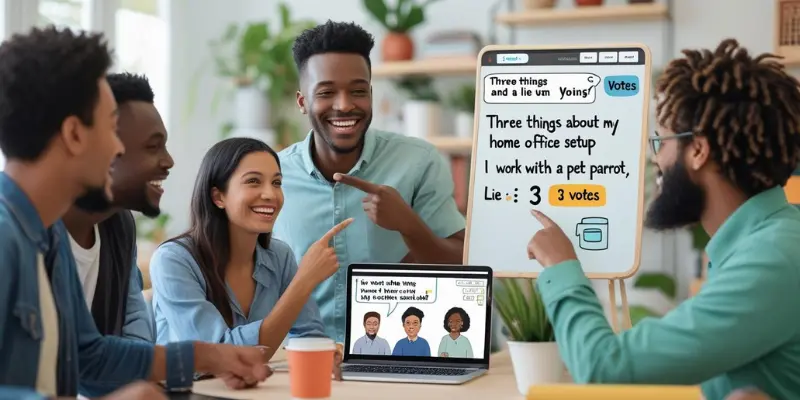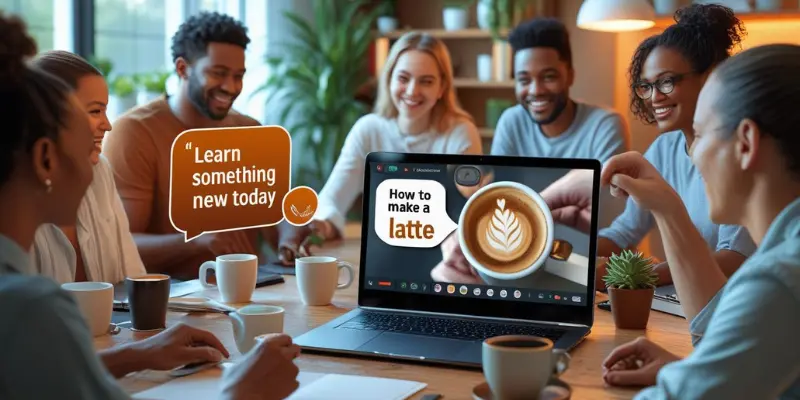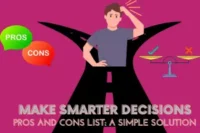Beyond the Bingo: 7 Virtual Team-Building Activities That Actually Build Connection
Published: 03/08/2025
The daily grind of remote work can lead to a quiet, often invisible, erosion of team cohesion. Whether you’re working from a home office, a co-working space, or anywhere in between, it’s easy for those subtle connections that once defined workplace culture to slip through the cracks. As a manager, HR leader, or team member, you know this challenge all too well. And while Zoom fatigue is real, and virtual happy hours are nice in theory, they’re not really getting to the heart of the problem.
Let’s be honest: the classic icebreakers, the “tell me something fun” games—they can feel forced. In the world of remote work, you need something that goes beyond the surface, something that fosters real, lasting connections. If you’re looking for genuine ways to bridge the isolation, you’re in the right place.
This guide isn’t just another rundown of overused activities. Instead, it’s a detailed, step-by-step plan for seven unique virtual team-building activities that have been proven to spark genuine connection, boost morale, and most importantly, combat isolation. These activities are designed with one goal in mind: to make your virtual teams feel more like, well, a team again.
Forget about the typical “icebreaker” games. We’re diving into real, actionable solutions that can be integrated into your remote routine today. Ready to build lasting connections with your team? Let’s get started!
The Quick-Win Huddle: Energizers for Daily Stand-ups
When you’re working remotely, it’s easy to fall into the trap of monotonous, energy-draining meetings. The quick check-ins that should energize your team often become just another routine. But here’s the good news: you don’t need to overhaul your entire meeting schedule to break the monotony. Enter Quick-Win Huddles—low-pressure, high-impact activities that inject energy into your daily stand-ups without requiring much time or effort. These are simple enough to implement right away and can spark the kind of engagement that makes remote teams feel more connected, despite the distance.
Two Truths and a Lie (with a Twist)
We’ve all played Two Truths and a Lie—probably more times than we care to admit. But let’s face it: the answers are often too predictable, and the excitement fizzles out quickly. We all know someone’s going to say “I once met a celebrity” or “I’ve traveled to five countries.” While it’s fun for a minute, it doesn’t spark much conversation, and soon enough, it becomes a routine that everyone dreads.
The Unique Solution: Make it Relevant and Fun
To breathe new life into this classic, put a twist on it. Instead of random facts, ask team members to share three statements related to something more specific—like a work-adjacent topic. It’s easy to ask about things related to work that people haven’t shared before. Here are some examples:
- “Three things about my home office setup”
- “Three surprising facts about my favorite productivity tool”
- “Three things you didn’t know about my work-from-home routine”

Actionable Steps:
- Start a round-robin: Everyone takes turns, and you can go in any order—just make it fun and relaxed.
- Share your three statements: Each person shares their facts, keeping them work-related but still personal enough to spark curiosity.
- Vote in the chat: After someone shares their statements, the rest of the team votes on which one they think is the lie.
- Reveal the truth: The person who shared the statements reveals the lie and gives a quick story behind it.
Benefits:
- Encourages creativity: By focusing on work-related topics, the game sparks interesting conversations you wouldn’t normally have.
- New conversation starters: It’s a fresh way to get to know colleagues and discover unique tidbits that might otherwise go unshared.
- Quick to implement: It can be done in just a few minutes, making it easy to add to your daily stand-ups without wasting time.
I remember one time, I played this with my team, and someone shared that they had an entirely standing desk setup. We were all shocked, and it sparked a fun conversation about posture and productivity. It’s those small, personal insights that make this twist so valuable.
The Gratitude Round
We spend so much time talking about deadlines, challenges, and what’s not working. While addressing problems is important, it can easily lead to a cycle of negativity that drags down team morale. By the end of the week, it can feel like all the conversations were about what’s broken, leaving little room for celebration or positivity.
The Unique Solution: Shift the Focus to Gratitude
A simple but incredibly effective way to combat this is by dedicating just two minutes at the beginning or end of a meeting for everyone to share one thing they’re grateful for. It doesn’t have to be work-related—sharing something personal is just as impactful. This tiny shift in perspective not only helps break the cycle of problem-solving but also cultivates a culture of appreciation, reminding your team of the positive things in their lives.
Actionable Steps:
- The manager starts: As the leader, kick off the round by sharing something you’re grateful for. This sets the tone and encourages others to follow suit.
- Each person shares: Keep it quick—everyone shares their thought in just 30 seconds. It can be a personal win, something work-related, or just a moment of gratitude from their week.
- Thank the team: After everyone has shared, express appreciation for their openness. Acknowledge the positive energy this brings to the meeting.

Benefits:
- Ends meetings on a positive note: Gratitude shifts the focus from stress and deadlines to something uplifting, making the team feel more valued.
- Fosters a culture of appreciation: When teams regularly share what they’re thankful for, it creates an environment where recognition and kindness are prioritized.
- Combats negativity: It’s easy to get bogged down by challenges, but gratitude helps pull the team out of that mindset and keeps them motivated.
With these two energizers, you’re not only breaking the ice—you’re building stronger team connections, increasing morale, and creating a culture that values both personal and professional growth. Ready to kick off your next stand-up with some gratitude and creativity? Try these out and watch your team dynamic improve.
The Connection Catalyst: Activities for Deeper Engagement
Building a remote team isn’t just about preventing isolation—it’s about creating genuine bonds and fostering a sense of belonging that extends beyond Slack messages or project updates. While quick energizers are great for breaking the ice, deeper engagement requires intentional activities that allow people to connect on a more meaningful level. These activities take a little more time to plan, but they’re designed to create lasting impressions that strengthen your team’s foundation. So, if you’re ready to invest in real connection, these are the activities you need.
The Virtual “How-To” Session
lls and interests. In a traditional office setting, you might overhear a colleague talking about a hobby, a hidden talent, or a creative project they’re working on. But in the virtual world, these opportunities to connect on a deeper level are few and far between. Over time, this can create a sense of disconnection, as team members only know each other for their work-related roles, missing out on the richer, more human side of their colleagues.
The Unique Solution: Schedule a 30-45 Minute “How-To” Session
A great way to tap into your team’s unique talents and build stronger connections is by hosting a Virtual “How-To” Session. This is a 30-45 minute session where one team member shares a non-work-related skill, teaching the rest of the team something new. The key here is to make it something fun and personal—not another boring training session. You could learn how to brew the perfect cup of coffee, master a yoga pose, or even explore an obscure hobby, all while building connections outside the scope of your day-to-day work.

Actionable Steps:
- Poll the team for volunteers: Start by asking team members what unique skills or hobbies they’d be willing to share. Some fun ideas could include “how to make the perfect latte,” “a five-minute meditation guide,” or “how to use a specific Excel function.”
- The presenter shares their skill: The volunteer then leads a live demonstration via screen-sharing or camera, teaching the team the ins and outs of their chosen skill.
- Q&A and practice session: After the demo, open the floor for questions and allow the team to practice what they’ve learned. This can be a fun and informal way to bond and learn together.
Benefits:
- Humanizes team members: By allowing your team to share personal skills, it helps everyone see their colleagues as more than just work robots—they’re real people with hobbies, interests, and passions.
- Promotes new learning: It’s a great way to inject some fresh knowledge into your team’s skillset, while also giving them an opportunity to learn something new and exciting.
- Creates a shared, memorable experience: These sessions bring the team together over something outside of work, helping build a shared history and common ground.
One HR department I worked with implemented a monthly “How-To” session, and they saw a remarkable increase in their survey scores for “personal connection.” It was clear that learning about each other’s skills not only made work more enjoyable but also made employees feel more connected on a personal level.
The Collaborative Story
In virtual environments, casual conversations can sometimes feel awkward or forced. You know the type—those awkward pauses during video calls when everyone’s waiting for someone to speak. Without the natural flow of in-person interactions, team members may hold back, and before you know it, the connection starts to feel mechanical. In these moments, it’s clear that communication is struggling, and it can be tough to get creative juices flowing.
The Unique Solution: Build a Collaborative Story
To shake up traditional conversation and spark creativity, try The Collaborative Story. This activity uses a shared document (Google Docs, Miro, or any other platform your team uses) to build a narrative together. Everyone takes turns adding a sentence, building on what others have said. The result? A fun, collaborative exercise that improves written communication, encourages creativity, and gives everyone a chance to contribute in a lighthearted way.
Actionable Steps:
- The host starts the story: Begin the activity by writing a single sentence that kicks off the story. This could be as simple as, “Once upon a time, there was a robot who wanted to learn to dance.”
- Each person adds a sentence: The next person continues the story by adding their own sentence, building on what was previously written. This can quickly become a hilarious or unexpected ride.
- Continue until the story reaches a natural conclusion: You can set a timer to limit the time spent, or you can simply finish when the story feels right. It’s important to keep it fun and relaxed.
- Read the story aloud: Once everyone has contributed, read the final story together. The laughs and shared moments will help cement the bond within your team.
Benefits:
- Enhances creative collaboration: This activity fosters teamwork and helps team members build on each other’s ideas. It’s a great exercise for creative problem-solving.
- Improves written communication skills: Whether you realize it or not, collaborative storytelling forces you to think critically about language and how to convey ideas clearly and creatively.
- Relieves stress: Breaking away from the usual agenda and letting the team have some fun together offers a mental break. It’s a great stress reliever and boosts morale.
Both of these activities go deeper than typical team-building exercises by fostering real connections and encouraging creativity. If you’re looking to build lasting bonds and a stronger sense of belonging, these activities are a great place to start. Ready to transform your team dynamics? Give these a try and watch your team engage in a whole new way.
The Collaborative Challenge: Projects that Empower Teams
Some team-building activities are designed to be fun and light-hearted, but Collaborative Challenges take things a step further. These are more involved, project-based activities that focus on improving essential skills like teamwork, communication, and problem-solving—all in a fun and engaging way. These challenges are a fantastic opportunity to enhance collaboration in a real-world context while fostering a sense of camaraderie among team members. Unlike typical icebreakers, these activities require critical thinking, creativity, and a bit of pressure, making them perfect for teams that want to sharpen their problem-solving skills while strengthening their bond.
The “Solve a Fictional Problem” Challenge
One common pitfall of team-building exercises is that they feel too disconnected from the everyday challenges teams face in their actual work. While fun, activities like quizzes or icebreakers don’t always reflect the urgency, creativity, or teamwork needed in real-life situations. Team members might enjoy the break from routine, but they leave the activity without gaining any direct, actionable insights that apply to their day-to-day tasks. So how do you bridge that gap?
The Unique Solution: Create a Fantastical Yet Structured Problem to Solve
The “Solve a Fictional Problem” Challenge gives your team an opportunity to flex their problem-solving muscles while staying engaged in a creative, fun context. The idea is to present a fictional, high-pressure scenario that mirrors the types of challenges your team might face—only with a unique twist. This could involve solving a crisis on Mars, handling a mystery in a parallel universe, or even navigating a time-traveling emergency. It’s structured, so everyone knows the task at hand, but it’s open-ended enough to allow creative solutions.
Actionable Steps:
- Create a detailed prompt: Set the stage by giving your team a fictional scenario with a specific problem to solve. For example, “Your team is an emergency response crew on Mars, and a critical oxygen generator is offline. Your budget is limited, and you can only use three specific tools to fix it.”
- Break the team into smaller groups: Divide your team into small groups so they can brainstorm and collaborate without feeling overwhelmed by the larger team dynamic.
- Give them 20 minutes: Allow each group 20 minutes in breakout rooms (if using virtual tools) to come up with their solution. Set a timer to keep them on track.
- Group presentations: After the brainstorming session, have each group present their solution to the full team. They should explain their approach, reasoning, and the tools they chose.
Benefits:
- Improves problem-solving: Teams learn how to think critically and make decisions under pressure—skills they can transfer directly to real work situations.
- Encourages collaboration: This activity pushes team members to work together, combining their skills and ideas to find the best solution.
- Effective communication: Each group must communicate their ideas clearly and persuasively when presenting, which builds presentation and teamwork skills.
- No risk of failure: Because the scenario is fictional, there’s no risk of making a mistake in front of a client or higher-ups—just pure problem-solving fun.
The Team Time Capsule
In a remote environment, it’s easy to feel disconnected from your team’s history. Without the regular office interactions, it can be challenging to maintain a sense of collective identity, and the milestones that teams traditionally celebrate—like anniversaries, personal achievements, or company successes—can feel like they slip by unnoticed. The result? A lack of shared memories or an emotional connection to the team’s journey, which can diminish team morale and engagement.
The Unique Solution: Create a Virtual Time Capsule
To remedy this, the Team Time Capsule serves as a virtual scrapbook of the team’s shared experiences over time. Each team member contributes something personal that represents their time on the team—whether it’s a photo, a song, a quote, a meme, or a short paragraph. This collaborative activity not only reinforces the sense of history but also helps celebrate team milestones in a meaningful way.
Actionable Steps:
- Submit a team item: Have each team member submit something that represents their experience over the past year. It could be:
- A picture (of a team event, a work moment, or something personal that reflects their journey)
- A link to a song that they’ve listened to during work
- A quote from a team chat that made an impact
- A meme that was shared and laughed about
- A short paragraph about a personal highlight
- Host a presentation: Once all the items are submitted, the host compiles them into a shared document or presentation.
- Reveal and discuss: During a team meeting, the host reveals the time capsule and explains each submission. Team members can discuss why they chose their items and share any additional thoughts. It’s a wonderful way to spark conversations and reminisce about the team’s journey.
Benefits:
- Fosters a sense of shared history: This activity reminds the team of their collective experiences and the growth they’ve achieved together.
- Reinforces team values: By reflecting on the past year, team members can see how their individual contributions have helped shape the team’s culture.
- Celebrates milestones: Whether it’s personal achievements or team successes, this activity highlights the moments that matter most.
- Deepens team connections: Sharing personal memories and stories enhances emotional connections, making the team feel more cohesive and valued.
These Collaborative Challenges are designed to push your team to work together in new, creative ways while reinforcing their connection to each other and the team’s history. The beauty of these activities is that they blend work skills with personal engagement, allowing for meaningful interactions without the pressure of typical work discussions. Try them out and watch your team come together—stronger and more connected than ever before.
Expert Tips & Common Mistakes to Avoid
To truly get the most out of your virtual team-building activities, you need to approach them strategically. While the activities themselves are important, how you implement them can make or break the experience. This section is dedicated to helping you avoid common pitfalls and maximize the impact of your team-building efforts. By applying these expert tips, you’ll ensure that your activities resonate with your team and foster the genuine connection you’re aiming for.
The Biggest Mistake: Making it Mandatory
One of the most common mistakes when planning team-building activities is making them mandatory. While the intent behind this is to ensure participation, it often backfires. When team members feel coerced into joining an activity, they approach it with a negative mindset, which not only defeats the purpose of bonding but can also harm morale. Forcing participation can feel like an obligation rather than an opportunity to connect, and this leads to disengagement, frustration, and lower energy during the activity.
Advice: Frame Activities as an Opportunity to Connect, Not an Obligation
Instead of forcing participation, position these activities as a fun, voluntary opportunity to connect with others. Create a welcoming environment by sending out invitations with a clear “no-pressure” message. When people feel that they have a choice and that their time is being respected, they’re far more likely to engage fully and authentically. Building a culture where participation is optional but encouraged fosters trust and respect, which is key to long-term team cohesion.
The Expert Tip: Align Activities with Team Goals
Not all team-building activities are created equal. For maximum impact, it’s essential to align the activities with the specific goals or challenges your team is facing. If your team is struggling with creativity, don’t just pick a random icebreaker. Instead, choose an activity that nurtures creative problem-solving. If they’re feeling overwhelmed by work-life balance, opt for something that encourages mindfulness or relaxation. By being intentional with the activities you choose, you’re more likely to see real results that positively affect your team’s dynamic and performance.
Advice: Tailor the Activity to Meet Team Needs
Take the time to assess what your team needs most and choose activities that align with those needs. For instance, if communication is a struggle, opt for activities that enhance collaboration and dialogue. If productivity and motivation are low, choose something that re-energizes the team. Customizing activities for the team’s specific goals helps maximize engagement and impact.
Research has shown that intentional team-building activities, such as those aligned with specific skills, can significantly improve project outcomes. A study from the Harvard Business Review found that teams that engaged in goal-oriented activities were 25% more likely to report higher levels of collaboration and problem-solving effectiveness.
The Practical Tip: Don’t Forget the Solopreneurs
While team-building activities are often designed for larger teams, small teams or solopreneurs might feel left out of the fun. If you’re working with just a few people—or even solo—it might feel like team-building activities are reserved for bigger groups. But even small teams or individuals can benefit from these types of bonding exercises, and it’s essential to adapt the activities to make them accessible.
Advice: Adapt Activities for Small Teams or Solopreneurs
The good news? Many of the activities we’ve covered, like the “How-To” Session or the “Collaborative Story”, work perfectly for smaller teams or even a team of one. The key is to find a format that’s low-lift and high-value. For instance, a small team could still benefit from the “Collaborative Story” activity by simply taking turns adding a sentence to a shared document. Solopreneurs can also enjoy a “How-To” session by focusing on personal development skills or even collaborating with one or two trusted partners. The idea is to scale the activity to your team size without losing its impact.
By keeping these expert tips in mind and avoiding the most common mistakes, you’ll be able to ensure your virtual team-building activities are as effective and engaging as possible. Remember, the goal is to build connection and engagement, so always be mindful of your team’s unique dynamics, needs, and preferences. Whether you’re working with a large, diverse team or a small group, the right approach will create lasting bonds and help your team thrive. Ready to elevate your team-building efforts? Start with a strategic mindset and watch your team flourish!
Conclusion
Effective virtual team building isn’t about expensive platforms or forced fun. It’s about creating intentional moments for connection—those small, meaningful interactions that make team members feel valued and engaged. In a world where remote work can easily lead to isolation and disengagement, it’s these genuine moments of bonding that can make all the difference.
By incorporating a mix of simple, actionable activities from this guide, you can tackle the challenges of remote work and foster a more connected, cohesive, and productive team. Whether you start with a quick energizer or dive into a deeper engagement activity, each step you take towards meaningful team-building will help improve your team’s morale and communication.
So why wait? Pick one activity from this list, implement it in your next team meeting, and see how your team’s dynamics begin to shift. The results might surprise you!
What’s your biggest team-building challenge? Share it in the comments below, and we might feature your question in an upcoming post. Let’s keep the conversation going!
Your Team-Building Questions, Answered
Virtual team-building involves activities designed to strengthen connections, improve communication, and boost morale in remote teams. It’s crucial because remote work often leads to isolation, which can decrease productivity and team cohesion.
These activities create opportunities for team members to bond, break away from work tasks, and engage in fun, meaningful interactions, which ultimately leads to better collaboration, trust, and communication.
Ideally, once a month or bi-weekly, depending on the team’s needs and goals. Regular engagement helps maintain strong connections, but it shouldn’t overwhelm or detract from core work responsibilities.
While virtual activities can’t fully replace face-to-face interactions, they are a great substitute when in-person meetings are impossible. They can keep teams connected and foster a sense of belonging in a remote setup.
Avoid making it mandatory. Frame activities as fun, voluntary opportunities to connect. Send invites with a no-pressure tone and emphasize the value they bring in terms of relaxation, collaboration, and team cohesion.
Simple activities like “Two Truths and a Lie,” virtual scavenger hunts, or “The Gratitude Round” are great starters. These require minimal setup and are quick, effective ways to break the ice and boost team morale.
Explore activities that align with your team’s interests or challenges. Try offering a “How-To” session where team members teach a non-work-related skill or create a collaborative story that taps into creativity.
By fostering stronger communication, boosting morale, and relieving stress, team-building activities can enhance collaboration, reduce burnout, and ultimately lead to higher productivity and better results.
Activities like the “Solve a Fictional Problem” challenge and collaborative brainstorming sessions can help improve creative thinking and problem-solving skills by encouraging teams to think outside the box in a fun, low-risk environment.
Make sure activities are accessible and considerate of everyone’s background and work preferences. For example, avoid time zones that exclude certain team members, and provide a mix of activities that accommodate introverts and extroverts alike.

- Be Respectful
- Stay Relevant
- Stay Positive
- True Feedback
- Encourage Discussion
- Avoid Spamming
- No Fake News
- Don't Copy-Paste
- No Personal Attacks



- Be Respectful
- Stay Relevant
- Stay Positive
- True Feedback
- Encourage Discussion
- Avoid Spamming
- No Fake News
- Don't Copy-Paste
- No Personal Attacks





